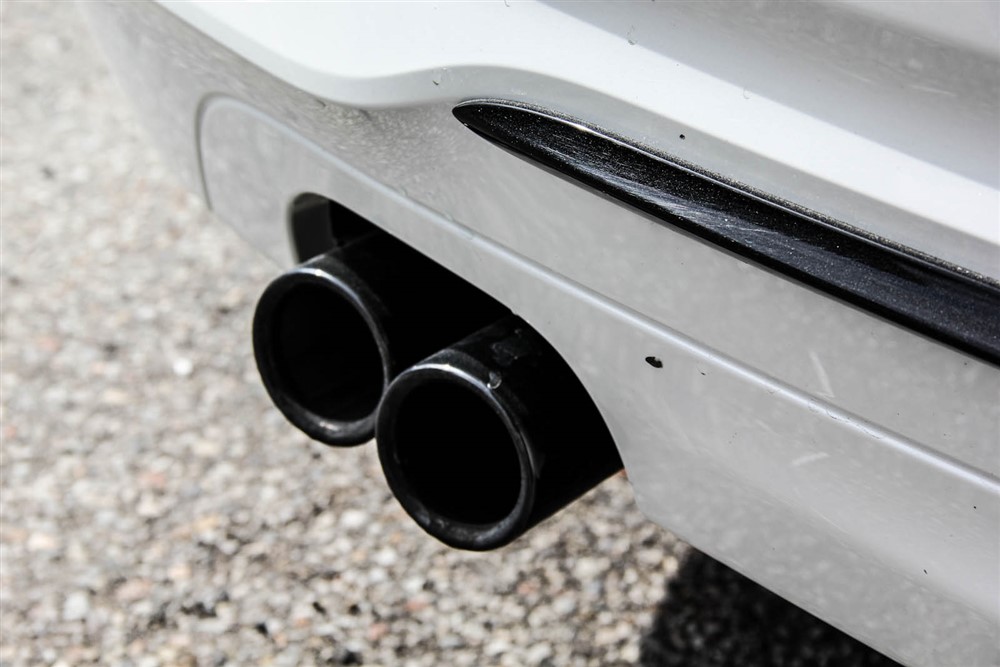Ever since the ‘departure’ of BMW’s iconic 1M, enthusiasts have been pining for a replacement. With the introduction of the new 2-series comes the spiritual successor to the 1M, the M235i. The sheer amount of hype around that car in the automotive community has led the entry-level model, the 2014 BMW 228i, to be all but forgotten. I didn’t expect it to be nearly as good as the M235i I have yet to drive, but after spending a week with this 228i, I was legitimately floored.
I have already experienced BMW’s new 2.0L turbocharged 4-cylinder engine and like it quite a bit. It’s important to note here that I put my money where my mouth is, and a 2013 328i Sport Line with this exact engine and transmission combination sits in my personal garage to this day. My expectations from this 228i were that it would be very similar to that car, only a little peppier. I could not have been more wrong. Horsepower from the 228i is 240, and torque is a peppy 258 lb-ft, available between 1250 and 4500 RPM. While I would have liked a 6-speed manual, my tester was equipped with the 8-speed ZF automatic that I am all too familiar with.
The 228i is seriously peppy. Using Sport+ mode, the car is exceptionally livable year round. It handles very well in the dry too; the 228 is so perfectly balanced that it makes even the mildest on/offramp a pleasant place to be. There is ample punch available right through the car’s power band, and the 8-speed transmission allows it to quietly coast on the highway. The engine sounds a bit different than my 328i too – it packs a slightly meatier but very noticeable growl. It’s been a while since I drove a BMW that wasn’t equipped with the xDrive all-wheel-drive system, and I’m not complaining. Being the end of winter, I didn’t really experience any snow during my week, but I encountered a lot of water and slush due to all the melting snow. Rear-wheel-drive is perfectly adequate twelve months of the year provided there’s a solid set of tires on the car.

I got some mixed reactions on the way the car looks throughout my test week. Some (like me) thought it looked great, others weren’t such big fans. I think the front 3/4 view (pictured above) is the 2-series’ best angle. The M-Sport goodies my particular test car lacked help the rear end look a bit better, but I prefer the rear of the now-defunct 1-series. The proportions on the new 2-series are dead-on though – it’s perfectly sized for my city commute. The wheels look great, and BMW’s trademark “angel eye” headlights look even better. I consider the 4-series a benchmark for how modern coupes should look, and the 2-series looks like a baby 4-series. This is a very good thing.
Base sticker on the 228i is $36,000. My test car came in at a pricey $47,045. Added options include a Premium Package (heated wheel, sunroof, Park Distance Control, navigation), the Executive Package (Comfort Access, adaptive headlights, XM Radio, and Harman-Kardon), the ConnectedDrive Package, Dakota leather, metallic paint, and the automatic transmission. I think if I were buying one of these, I’d skip on the ConnectedDrive, the automatic, and a few other things. Just under $40,000 is the sweet spot before the 2-series starts to get pricey.
BMW says fuel efficiency for the 228i is projected at a combined 7.2L/100km. In combined driving, I was not able to do much better than 8.5L/100km. Purely highway cruising, the car sipped close to 6.8-6.9L/100km. I ran 91-octane premium fuel with no added ethanol, and recommend the same for any prospective 2-series buyers. The car performs superbly well and this forced-induction engine should not be subjected to regular-grade fuel.
Those who frequently travel with more than two people should steer away from the 2-series and head for a 3 or 4-series. Rear-seat accommodations on this car are not the greatest. A handle flips the front seatback forward, and a button will move the whole seat forward, but there just isn’t space for a full-sized adult to get in the back. I’m also not really a fan of where the Bavarians have located the switch for the heated steering wheel. It’s not particularly inconvenient – it would just be nice if it were located in a visible location. There’s no indicator in the instrument cluster to tell you that it’s on either, so you have to guess.
Some purists have been saying that BMW has lost their path along the way. I wholeheartedly disagree – this is a brand that takes pride in being “The Ultimate Driving Machine”. Throughout the entire week I had the 2014 228i, all I wanted to do was drive; more and more. This thing is reasonably affordable (if you can live without having all the frills), it’s a metric ton of fun to drive, it doesn’t drink too much gas, and it doesn’t have too many moving parts to break down the road. At the end of the day, a car like this (with three pedals, of course) is exactly what being a car enthusiast is all about, isn’t it?
2014 BMW 228i Sport Gallery


















